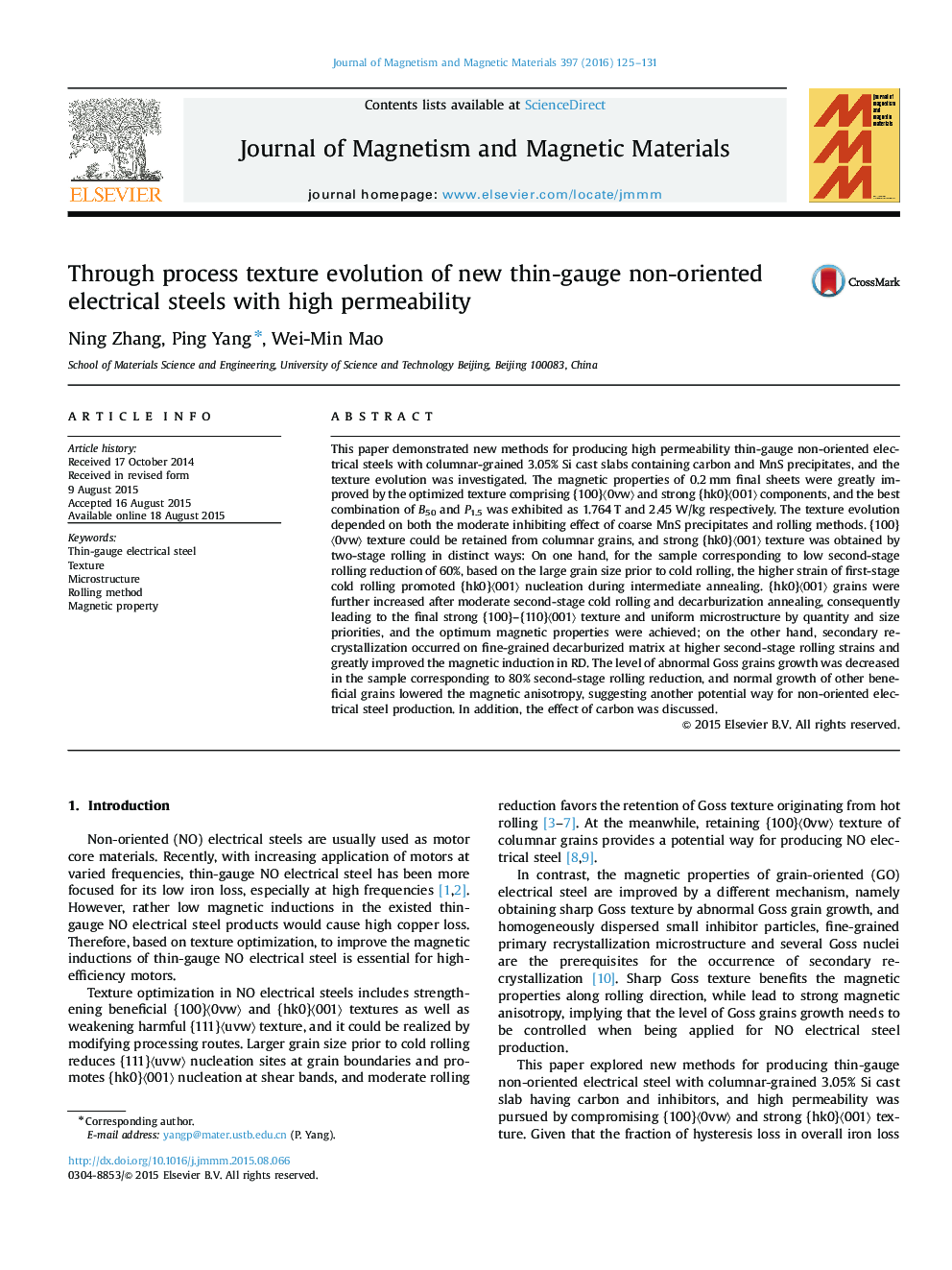| کد مقاله | کد نشریه | سال انتشار | مقاله انگلیسی | نسخه تمام متن |
|---|---|---|---|---|
| 1798757 | 1524824 | 2016 | 7 صفحه PDF | دانلود رایگان |
• New thin-gauge non-oriented electrical steels with high permeability were fabricated.
• The magnetic properties were improved by {100}〈0vw〉 and strong {hk0}〈001〉 texture.
• The texture evolution depended on the inhibiting effect of MnS and rolling methods.
• The increase of {hk0}〈001〉 texture was realized by normal or abnormal grain growth.
• Carbon was beneficial for reducing γ-fiber texture.
This paper demonstrated new methods for producing high permeability thin-gauge non-oriented electrical steels with columnar-grained 3.05% Si cast slabs containing carbon and MnS precipitates, and the texture evolution was investigated. The magnetic properties of 0.2 mm final sheets were greatly improved by the optimized texture comprising {100}〈0vw〉 and strong {hk0}〈001〉 components, and the best combination of B50 and P1.5 was exhibited as 1.764 T and 2.45 W/kg respectively. The texture evolution depended on both the moderate inhibiting effect of coarse MnS precipitates and rolling methods. {100}〈0vw〉 texture could be retained from columnar grains, and strong {hk0}〈001〉 texture was obtained by two-stage rolling in distinct ways: On one hand, for the sample corresponding to low second-stage rolling reduction of 60%, based on the large grain size prior to cold rolling, the higher strain of first-stage cold rolling promoted {hk0}〈001〉 nucleation during intermediate annealing. {hk0}〈001〉 grains were further increased after moderate second-stage cold rolling and decarburization annealing, consequently leading to the final strong {100}–{110}〈001〉 texture and uniform microstructure by quantity and size priorities, and the optimum magnetic properties were achieved; on the other hand, secondary recrystallization occurred on fine-grained decarburized matrix at higher second-stage rolling strains and greatly improved the magnetic induction in RD. The level of abnormal Goss grains growth was decreased in the sample corresponding to 80% second-stage rolling reduction, and normal growth of other beneficial grains lowered the magnetic anisotropy, suggesting another potential way for non-oriented electrical steel production. In addition, the effect of carbon was discussed.
Journal: Journal of Magnetism and Magnetic Materials - Volume 397, 1 January 2016, Pages 125–131
